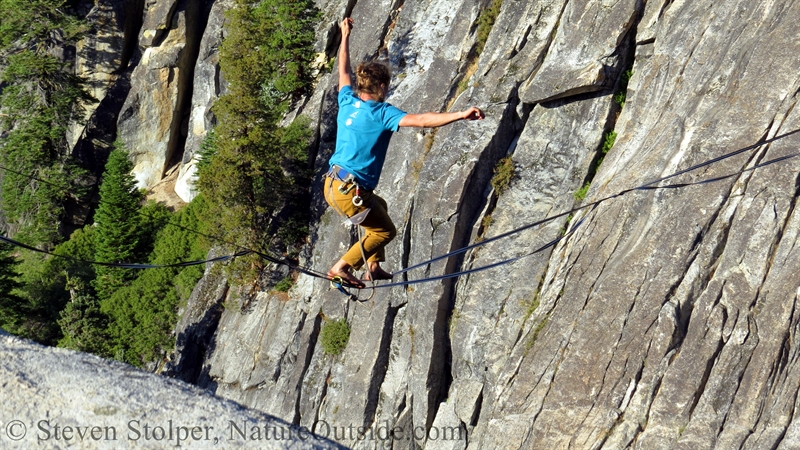
Life is a high-wire act. We constantly shift left and right to maintain our balance and avoid a perilous fall.
We need to get off the wire from time to time to preserve our sanity. And a long weekend hiking in Yosemite National Park is just the ticket.
My plan is to spend three days exploring the country along the road to Glacier Point. This area is less visited than others in the park. And I look forward to learning new trails. A friend has joined me for this expedition. She is the ideal hiking companion: She’s good company, an avid hiker, and will run slower than me if we encounter a bear. 🙂
Also, Glacier Point Road will be closed to all traffic for road improvement in 2021. So this may be my only chance to visit this area of the park for several years.
Sentinel Dome to Taft Point via the Fissures
There are plenty of references with directions to the trailhead and maps of the trail. So I’m not going to dwell on the details of the hike.
What you should know is that the hike is a moderate 5.1 mile loop. While there isn’t much elevation gain, you do need to be aware. The top of Sentinel Dome is at an elevation of 8,123 feet (2,476 m) and Taft Point is at 7,500 feet (2,285 meters). So it can be strenuous for people who drive to Yosemite earlier in the day from San Francisco or Los Angeles. Both cities are are at sea level.
And mountains make their own weather. You don’t want to be on Sentinel Dome during a thunderstorm.
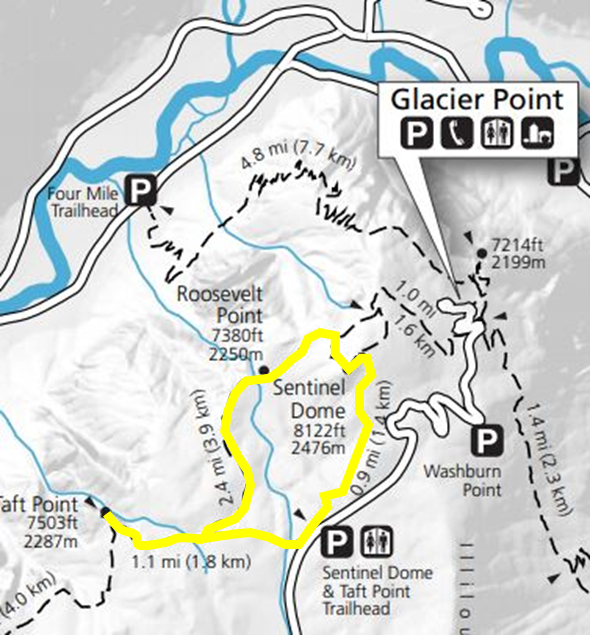
Here is a map of our route. The Merced River runs along the valley floor at an elevation of 4,000 feet. Map by NPS.
Sentinel Dome
My friend and I start our hike in late afternoon. The trail climbs the back side of the dome. At the top, we enjoy a breathtaking 360-degree view. The terrain in Yosemite is insanely vertical. I always feel like an ant crawling up the inside of a coke bottle.
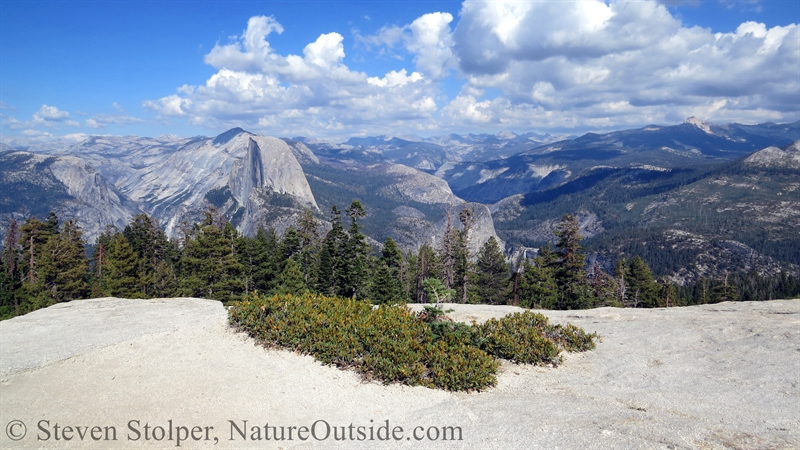
View from Sentinel Dome. The terrain in Yosemite is insanely vertical.
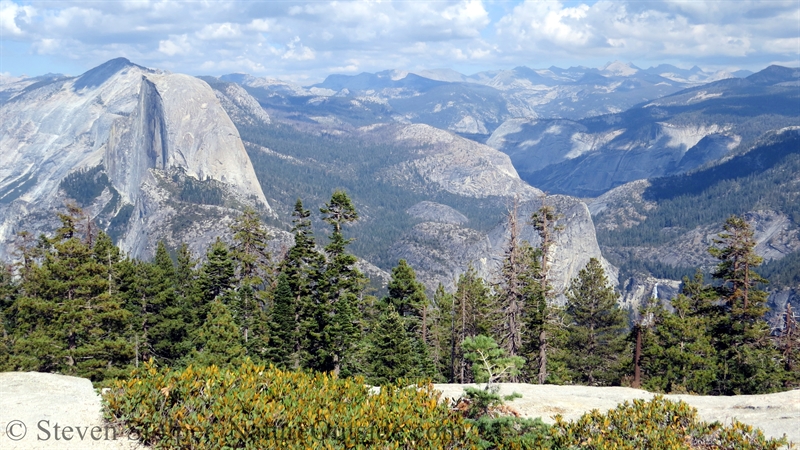
Looking from the top of Sentinel Dome across at the world-famous Half Dome (left side of photo).
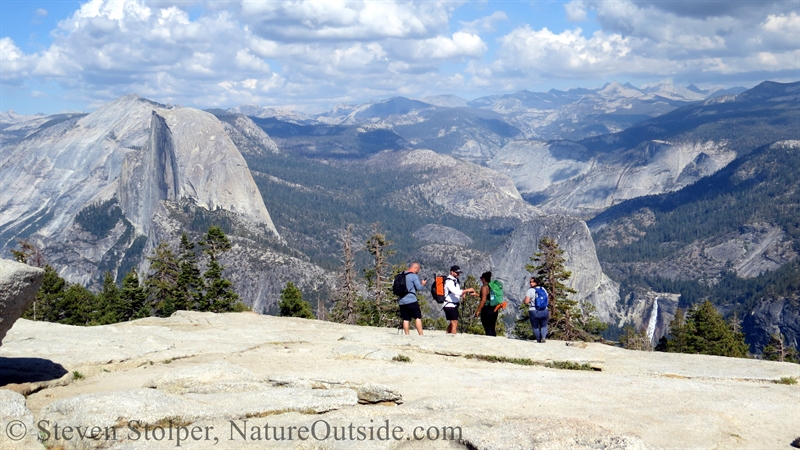
Here are some hikers for scale. The top of Nevada Falls is in the lower right of the photo.
It’s OK to Grouse on the Trail
We circle below the dome, on our way to Taft Point. We’re hiking in late afternoon and there aren’t many hikers on the trail. We encounter not one, but two female Sooty grouse (Dendragapus fuliginosus)! These birds are the size of chickens, and have a chicken-like shape. Grouse are reclusive creatures and I’ve rarely seen them at Yosemite. Both animals freeze, allowing us to creep closer. When they discover their camouflage doesn’t work, they stroll away from us. I wonder if they are habituated to people. I don’t expect to be able to creep so close.
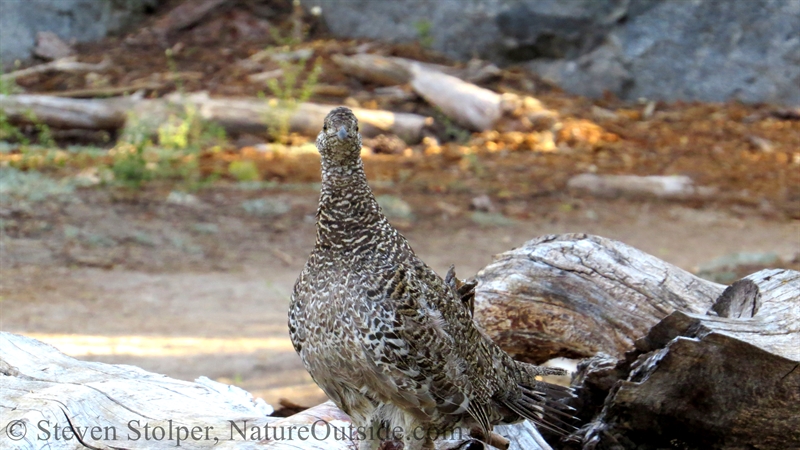
This female Sooty grouse does not appear happy to see us.
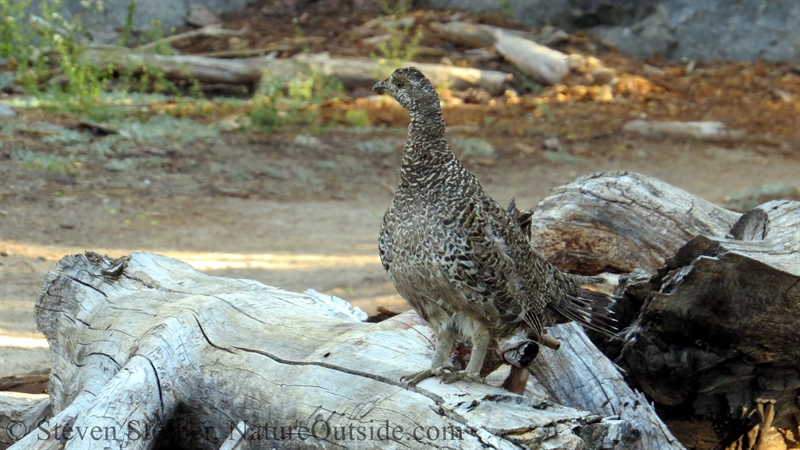
The Sooty grouse
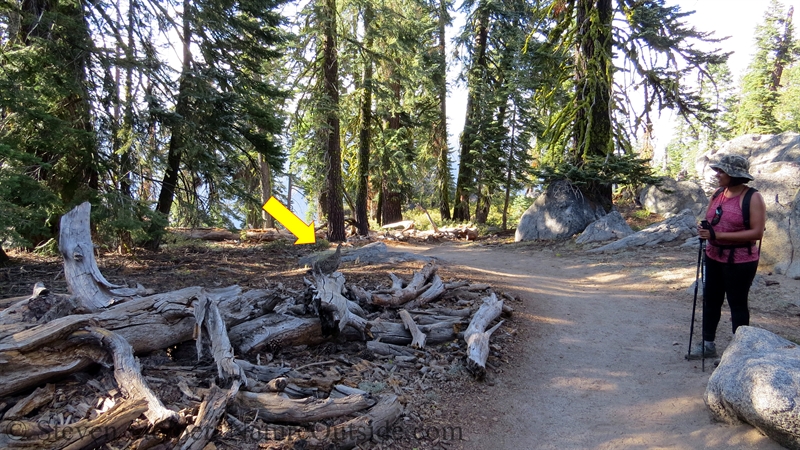
My friend was able to approach the bird, which is standing on some downed branches
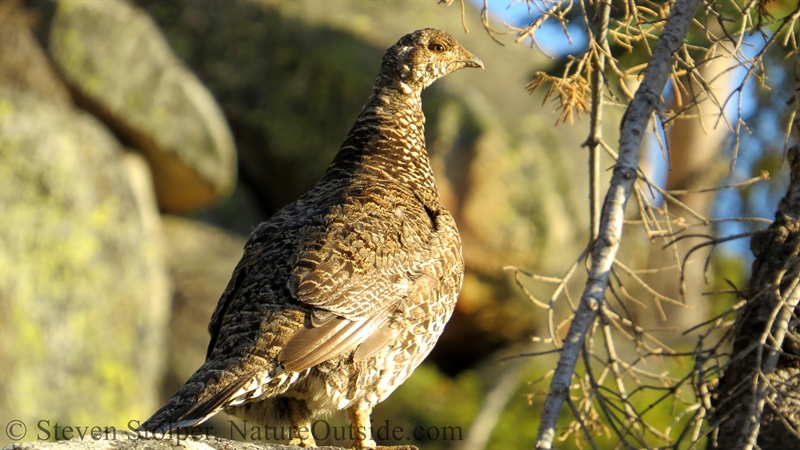
We found a second female standing guard on a rock. Its chick was nearby.
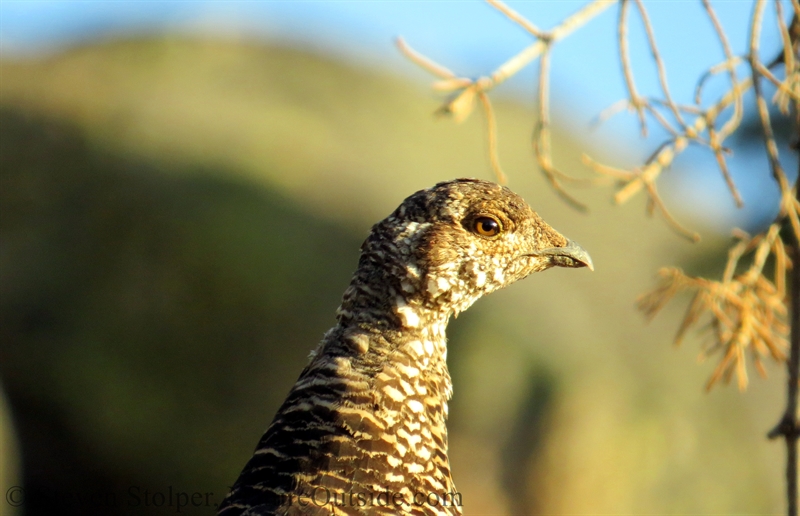
The grouse checks us out.
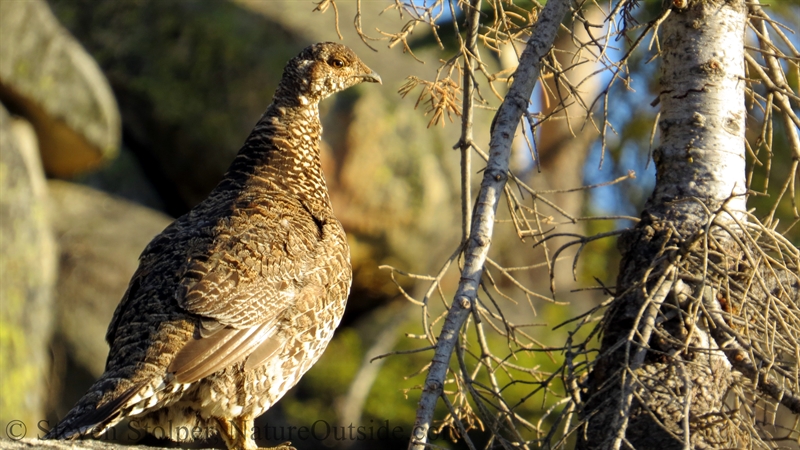
They always look disapproving.
The Golden-mantled Ground Squirrel
Our ancient ancestors gathered resources in one season to prepare for the next. Nature still repeats this cycle. As we hike, we interrupt a Golden-mantled Ground Squirrel (Callospermophilus lateralis) collecting and caching seeds from pine trees.
This squirrel is native to the western United States. And I only see them at higher elevations. This animal is about nine inches long and its cheeks are bulging with seeds. We pause to watch it dig a cache near its burrow.
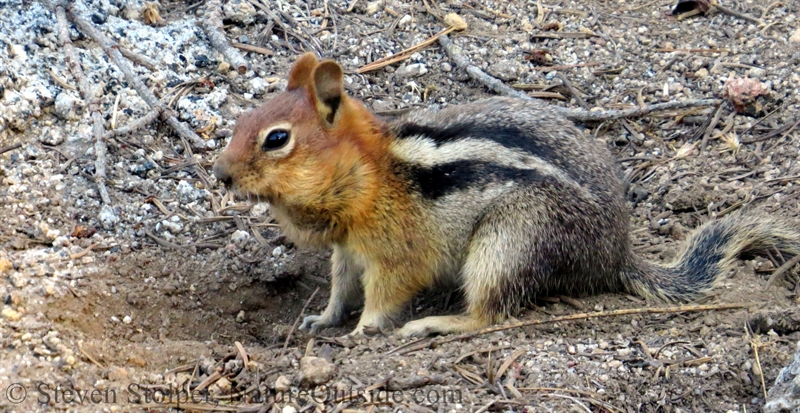
Golden-mantled Ground Squirrel. Notice the stripes stop at the “gold-draped” shoulders.
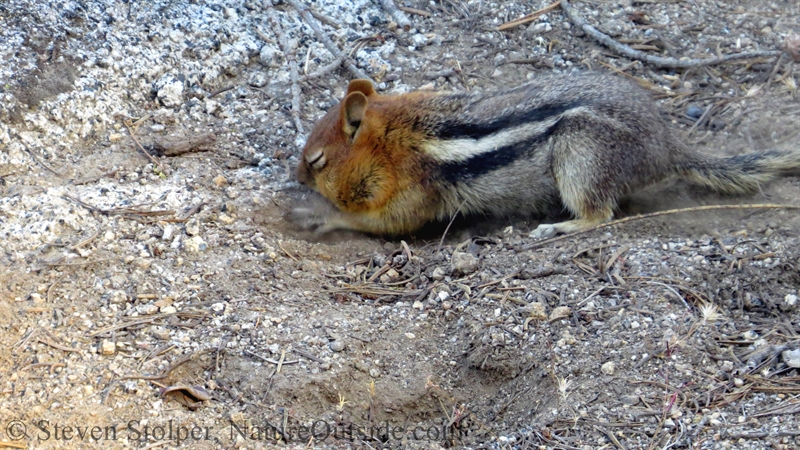
Digging a seed cache.
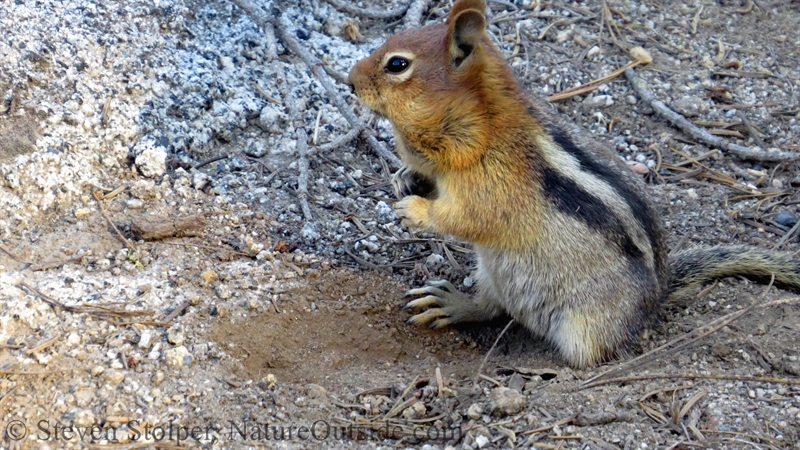
Here you can see the bulging cheek pouches.
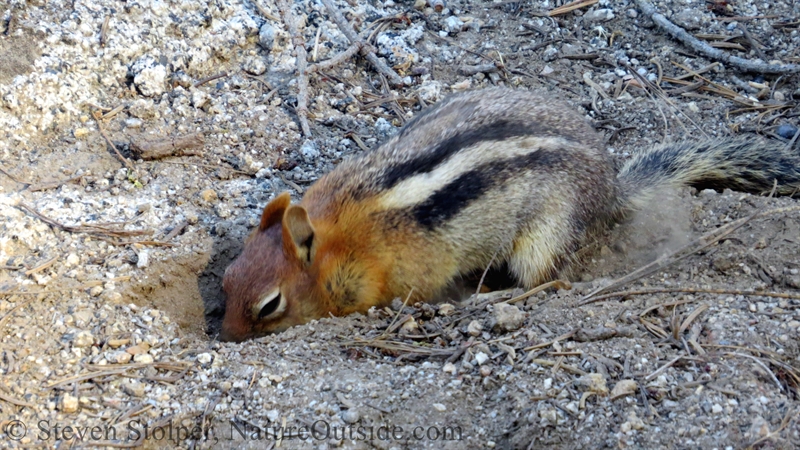
Notice the dirt thrown backward by the digging squirrel.
The Fissures
The scenery on this hike has all the awesomeness that visitors to Yosemite become accustomed.
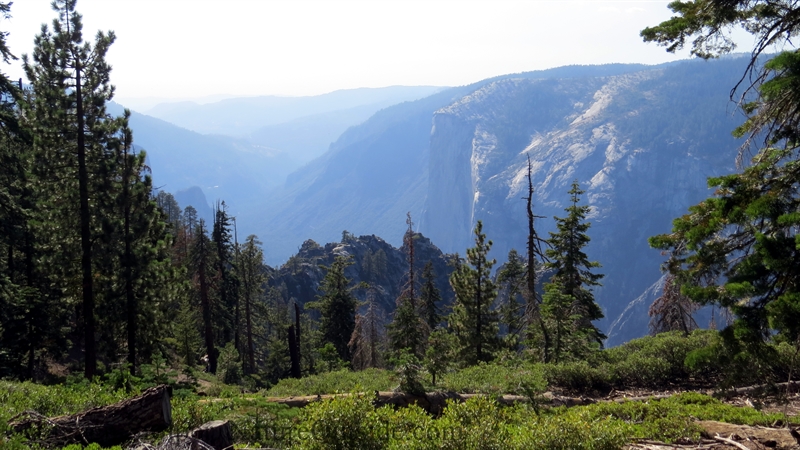
Looking toward Yosemite Valley.
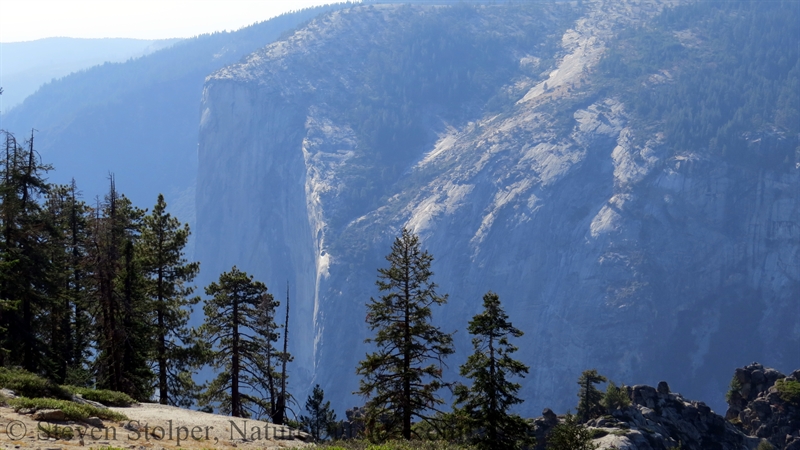
El Capitan is across the valley.
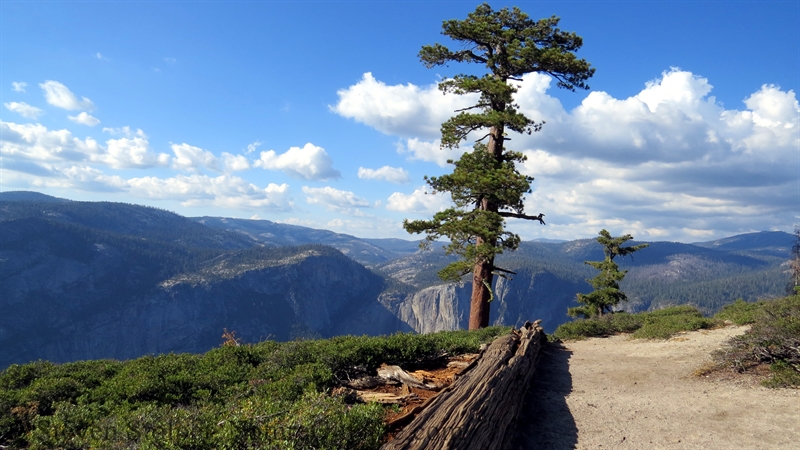
Words and pictures fail to capture the majesty of Yosemite.
As we approach Taft Point, we slow our pace. We need to be careful of the fissures. These are gashes in the granite that form holes that open over spine-chilling drops. I timidly approach one and stare into the chasm. Below is a thousand feet of fresh air.
The fissures are not obvious and you often come upon them before you realize they are there. It’s unsettling to think the granite may open at any moment to drop you into the valley below. Trail guidebooks advise that this trail is not a good place to hike with young children. But I guess it depends how much you like the children. 🙂
The fissures are difficult to see and I was unable to capture good photographs.
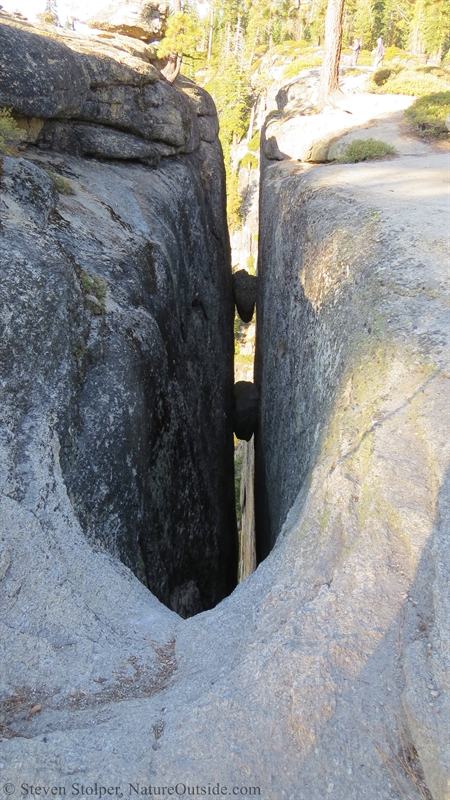
Looking down at a fissure. This is not the most impressive fissure, but it comes through in a photo.
Highlining at Taft Point
We arrive at the point and I can’t believe my eyes. There are ropes spanning several blood-curdling drops into the valley below. These are slack lines. And a small group of “highliners” is preparing to walk across them.
Slack lining has become a popular pastime in California. And Highlining takes it to the extreme. I’m relieved to see they are wearing climbing harnesses that are clipped-in to a safety line that runs below the slack line.
My friend and I strike up a pleasant conversation with a highliner as he prepares for his walk. I should mention that I was not tempted, even for a second, to ask him if I could try it.
The highliner sets off and my friend and I are captivated.
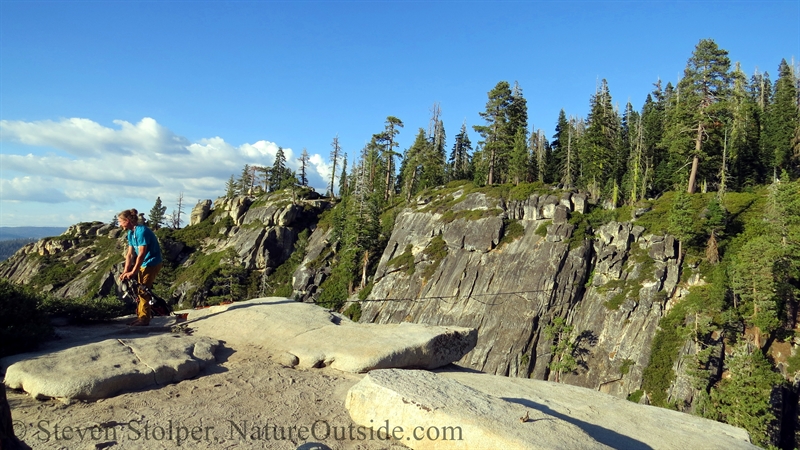
A highliner dons his safety harness
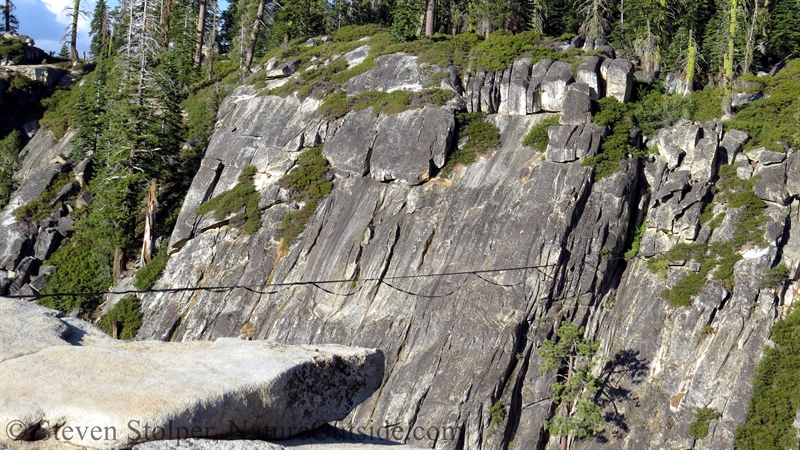
The line is higher than it looks in this picture.
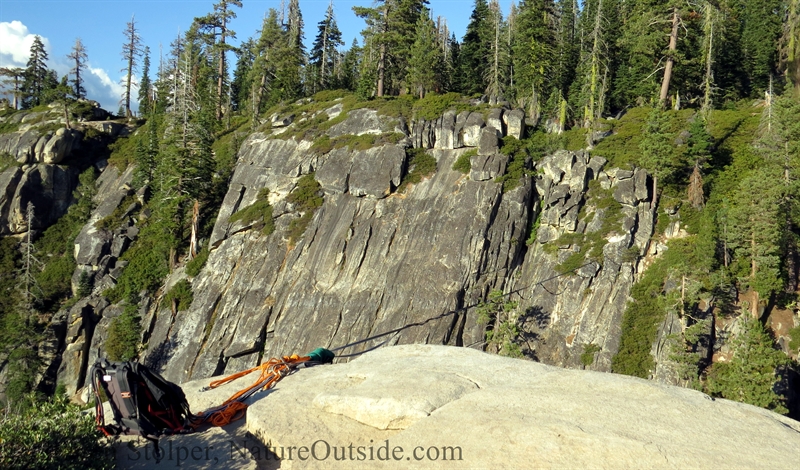
The nearby end of the highline. The person had to down-climb a cliff to anchor the far end.
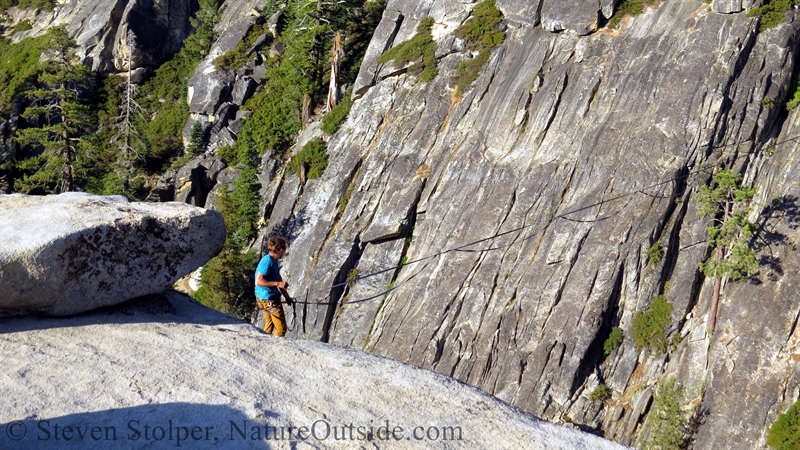
Straddle the line and work yourself out over the abyss.
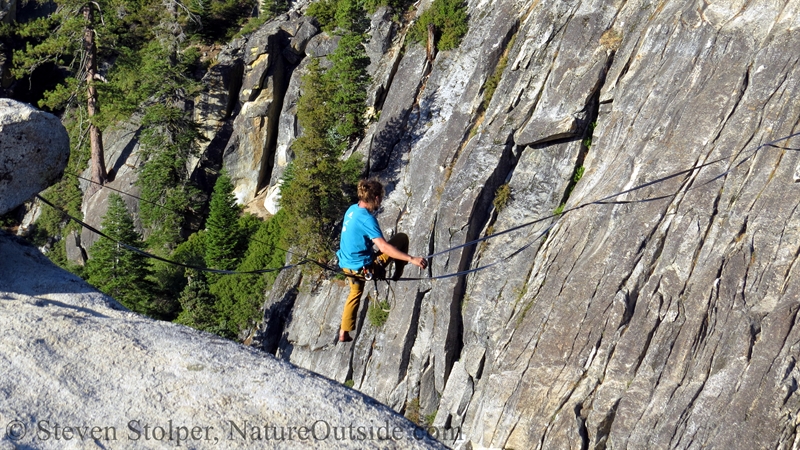
Rise to your feet (carefully) on the line.
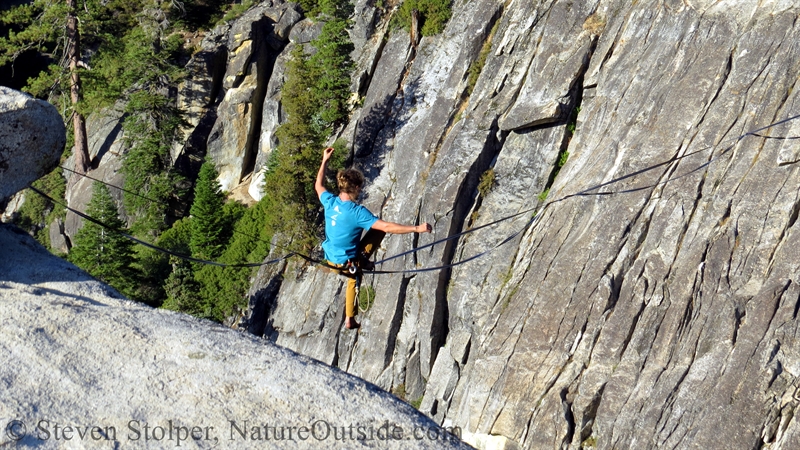
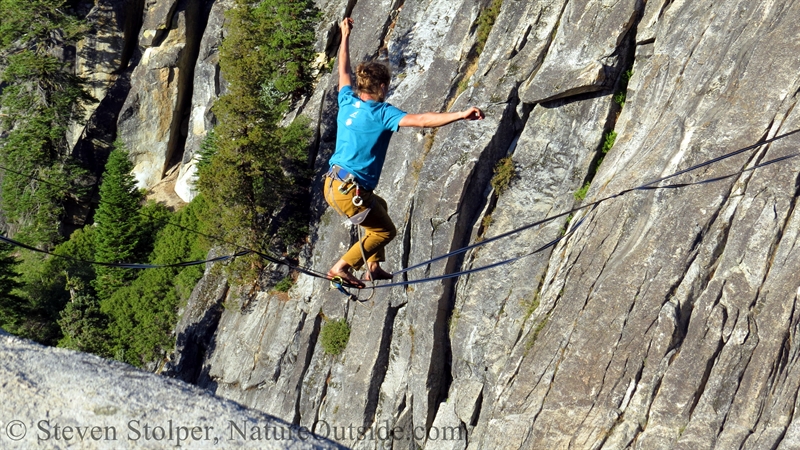
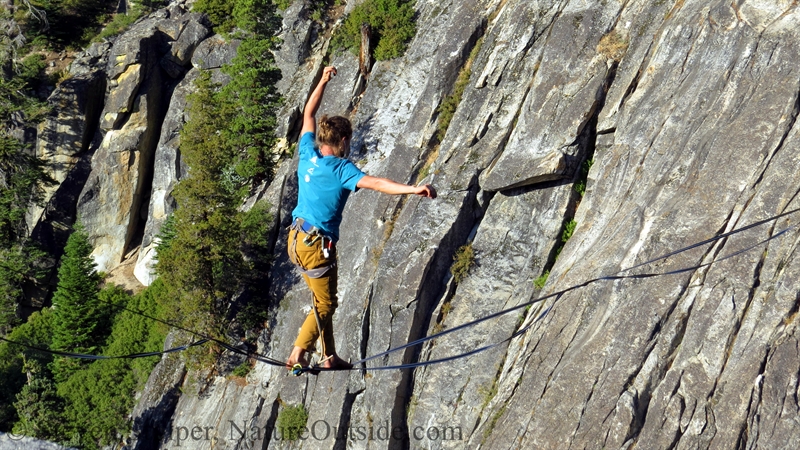
Away we go!
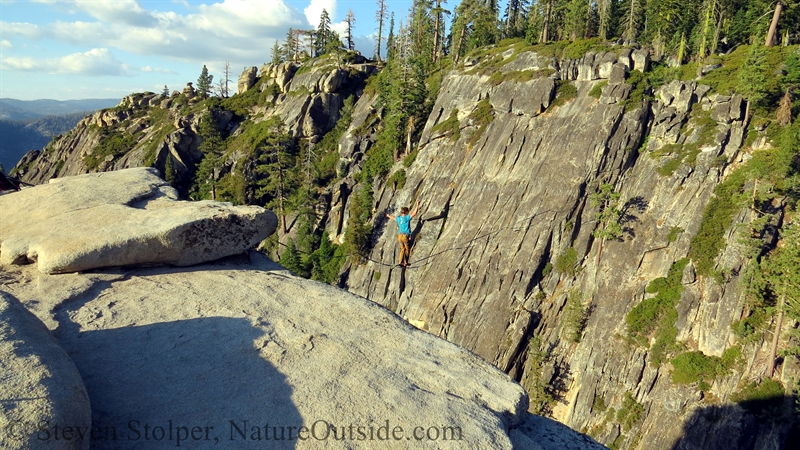
Walking the line.
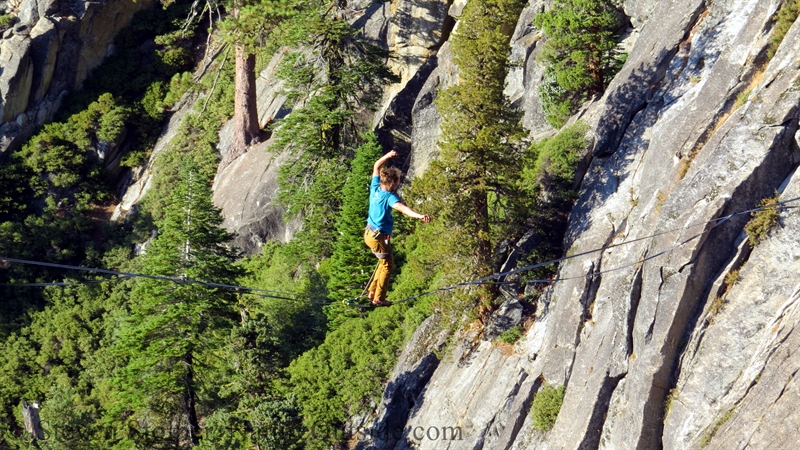
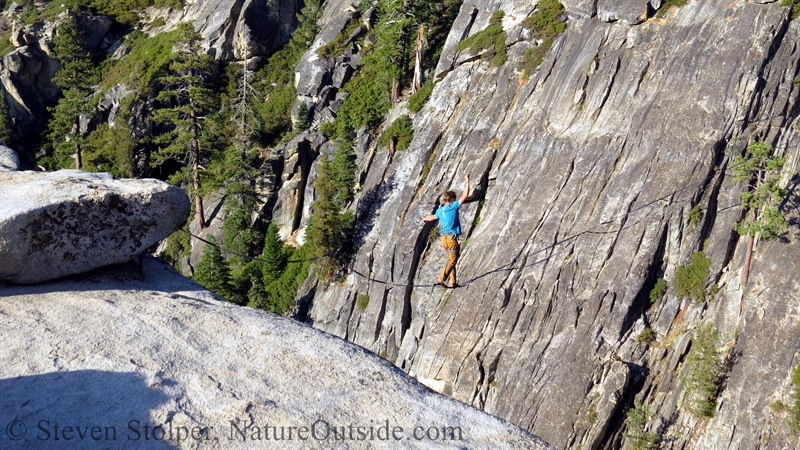
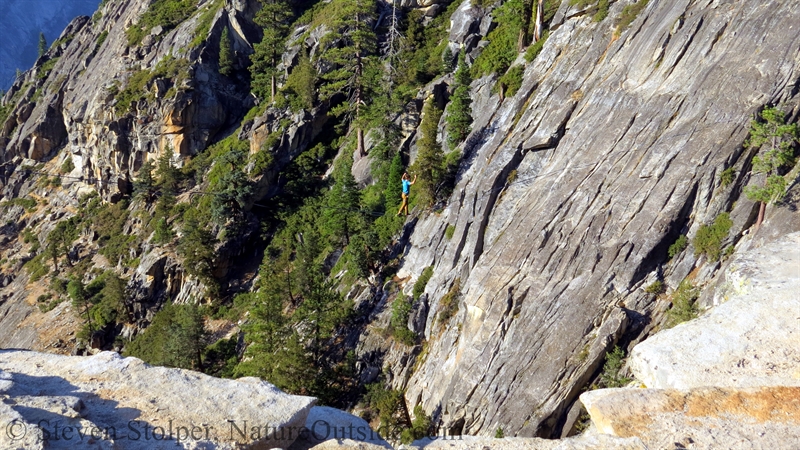
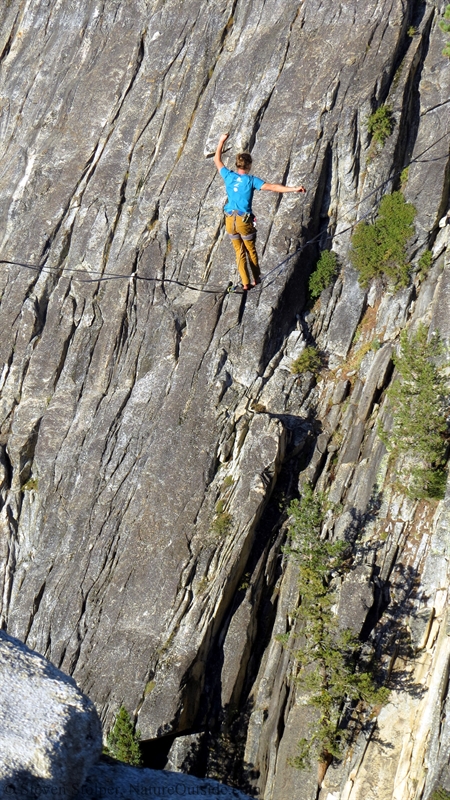
We come upon more highlines. And I actually see one of the walkers fall. Even with the safety harness, it’s a shock to see a person fall from that height. After the safety line brings him to a stop, the highliner grabs the rope and pulls himself up. He swings one leg around the highline and flips himself so that he straddles it. He gingerly gets to his feet and returns to the cliff’s edge. I start breathing again.
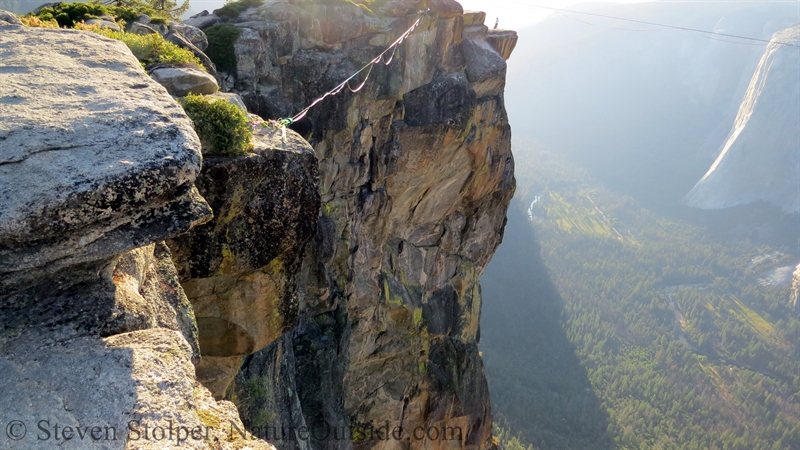
More highlines.
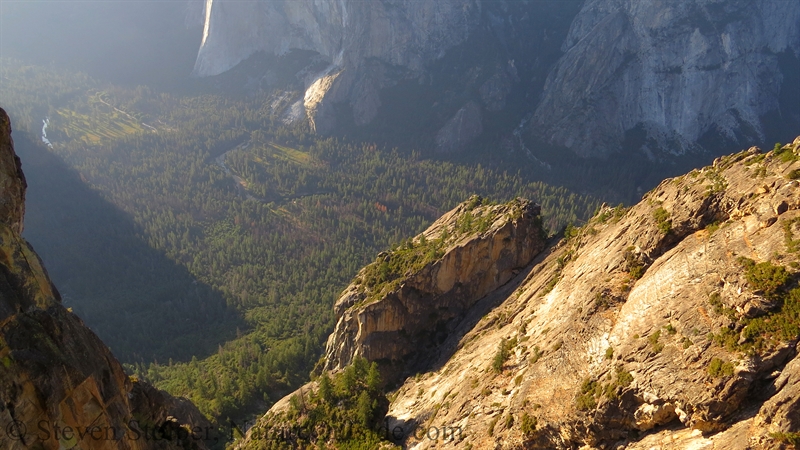
It’s a long way down.
We leave Taft Point to head back to the trailhead. We are elated to see so much nature on our hike. And we marvel at the skill and steely nerves of the highliners.
Have you been on this hike? Have you done slack line or highline? Share your experience in the comments below.
Related Articles on NatureOutside
Yosemite National Park – Maps and Books for Hiking
The High Sierra Loop – Introduction
For fun facts and useful tips, join the free Bushcraft Newsletter.



Steve, This is a great edition of your newsletter!
Thanks, Mark! I’m glad you like the article.